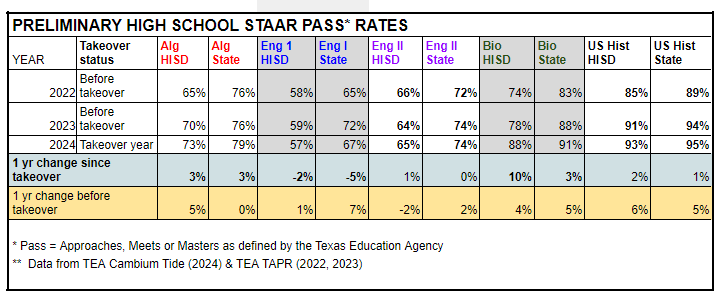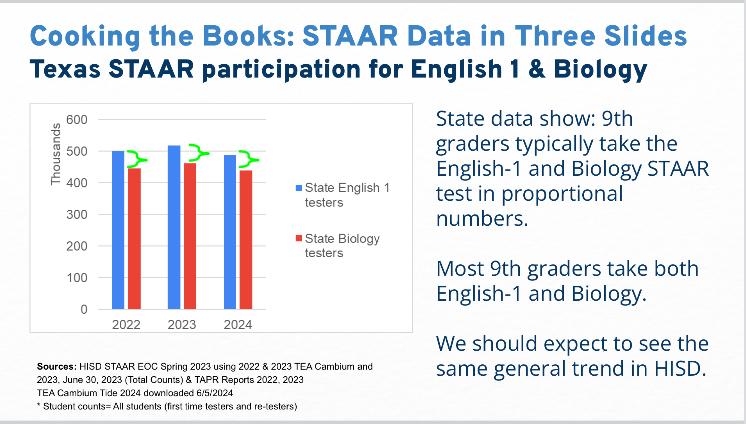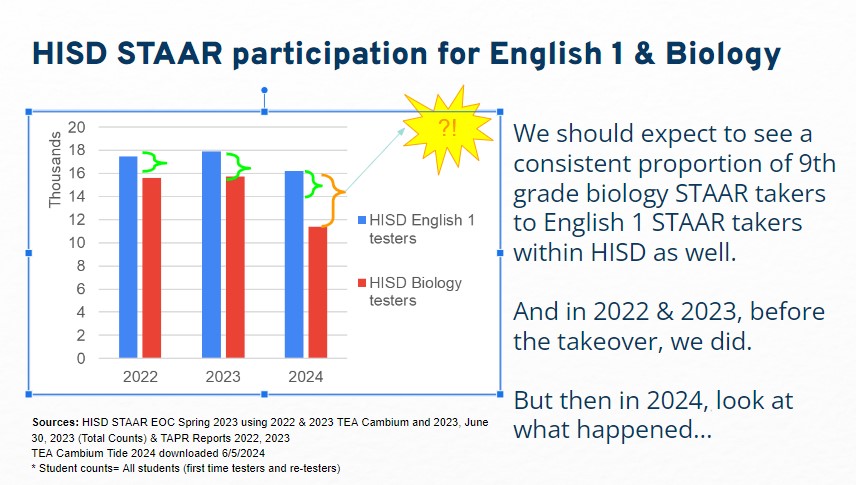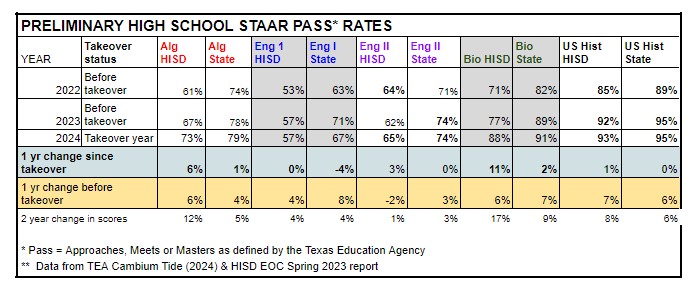Houston superintendent has been touting the great achievement of the district under his heavy-handed rule. Community Voices for Public Ed says not so fast.
HISD Superintendent Mike Miles has cherrypicked preliminary STAAR data to push his immoral agenda and to promote flashy headlines.
| At his press conference, Miles stated that “the district has achieved some historic academic growth.”
Parents and teachers are used to Miles and his lies. He has lied about reckless spending, about students with disabilities receiving extended time as required by law, about libraries and even telling students at the Houston Landing student panel that they did not have to carry traffic cones to the bathroom. It will come as no surprise that Miles is pulling a fast one again. A passing score on the STAAR assessment as defined by the Texas Education Agency means that the student received a score in one of three categories- approaches, meets or masters. Here is the preliminary high school data for HISD and the state. |
 |
| The table shows that HISD had more growth in high school STAAR pass rates for Algebra, English I, and US History before the takeover than since Miles became superintendent. This was not the headline Miles wanted.
So Miles, ever the wily fox, only released met and mastered percentages. “Focusing on ‘approaches (grade level)’ for us is a lower bar. We want to focus on the higher bar, which is ‘meets,’” state-appointed Superintendent Mike Miles said. TEA uses the three passing categories in its data analysis. So should Miles. Using the TEA designation-
The first table compares preliminary results for 2024 to TAPR final results for previous years. Below is a comparision of preliminary results across years. Were Miles’ endless, tedious slide decks that he forced teachers to use really so effective? Did it truly lead to a 10% or 11% growth in biology? How did he do it? Miles simply tested thousands fewer students in Biology than in previous years. |


Every ninth grade student must take English I as their first high school course with no exceptions. For math the first course must be Algebra although some students (4-8%) take Algebra in middle school. A student takes the STAAR the year they take the course. Thus, Miles could not fudge the data for STAAR Algebra or English I by excluding students from these courses.
In science, it is different. In Texas a new ninth grader can take almost any science course that does not have a prerequisite to it including chemistry, biology, environmental systems, and integrated physics and chemistry (IPC). The table above shows that normally, close to 90% of students take biology in their ninth grade year as their first high school course. Those who don’t take Biology in ninth grade either completed it in eighth grade for high school credit or, in some cases—usually newcomers—take Environmental Systems or IPC to improve their English before tackling Biology.
This past year, only 70% of English I test-takers also took Biology, compared to the usual 90%. One can posit that, in NES schools, Miles placed newcomers, ESL students, and students with disabilities who were performing poorly in eighth grade into a non-tested science class (IPC or environmental systems). As a result, students least likely to pass the Biology STAAR did not take it in NES schools this year.

